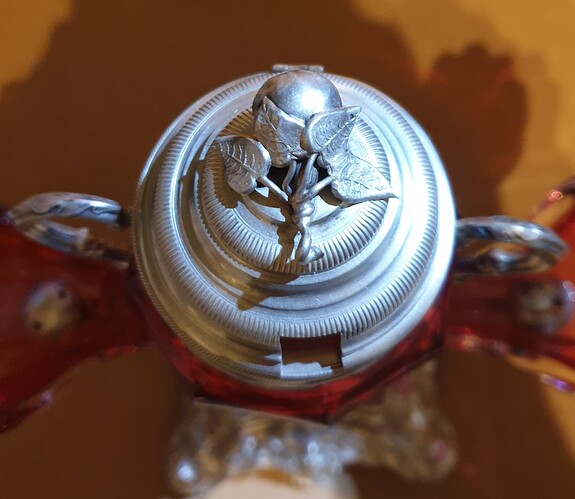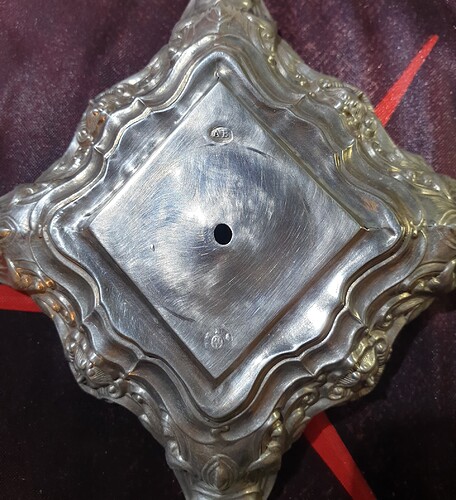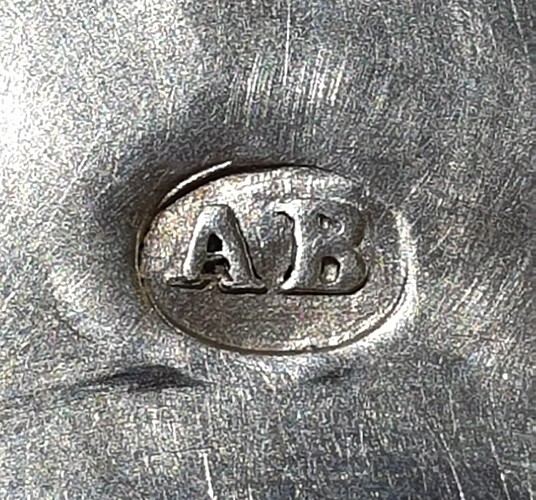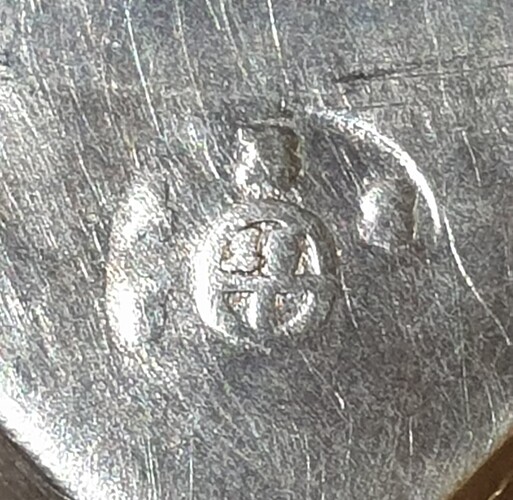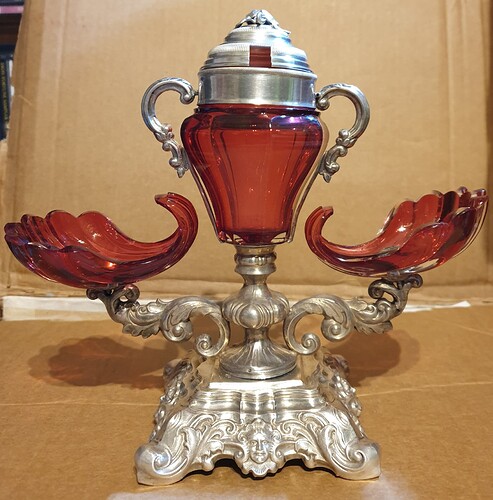AB - Abraham Bernhard BÄCHER (active 1853 - 1867, owner of the Silber Prägewaaren Fabrik factory in Prague, The Vienna workshop was established in 1830-32, the Prague one in 1835).
Silver 812,5.
B - Prague.
Austria-Hungary 1867 or 1857?
Am I right? Any help?
With some help from some ‘friends’ of mine. Let me know if this makes sense. And you’ve been a nice help many times for me.
Maker
“AB” = Abraham Bernhard Bächer, owner of Silber Prägewaaren Fabrik (Vienna c.1830–32; Prague from 1835; active to the mid-/late 1860s).
In the Austrian Empire (1807–1866) the assay-office letter “B” = Prague. In 1867 (Austro-Hungarian reform) Prague’s letter changed to “C.”
The pre-1867 Austrian fineness was given in loth; 13-loth = 13/16 = .8125 silver. That 13-loth standard was used until 1866; after 1867 the system switched to the Diana-head mark with numeric standards (e.g., .800, .900).
Because your piece carries Austrian-Empire style marks (B for Prague + pre-1867 control mark) and you’re reading the fineness as 812.5 (13-loth)—a standard not used after 1866—the date cannot be 1867.
The safest attribution is Prague, 1853–1866 (within Bächer’s Prague activity). If you can find a separate two-digit date punch on the piece (sometimes lightly struck on an edge or foot), it might read “57”—which would make 1857 exactly right. Without that explicit date punch, “circa 1855–65” is the defensible call.
Quick takeaway
AB = A. Bächer; town = Prague; standard = 13-loth (.8125); date = pre-1867 (very likely 1850s).
